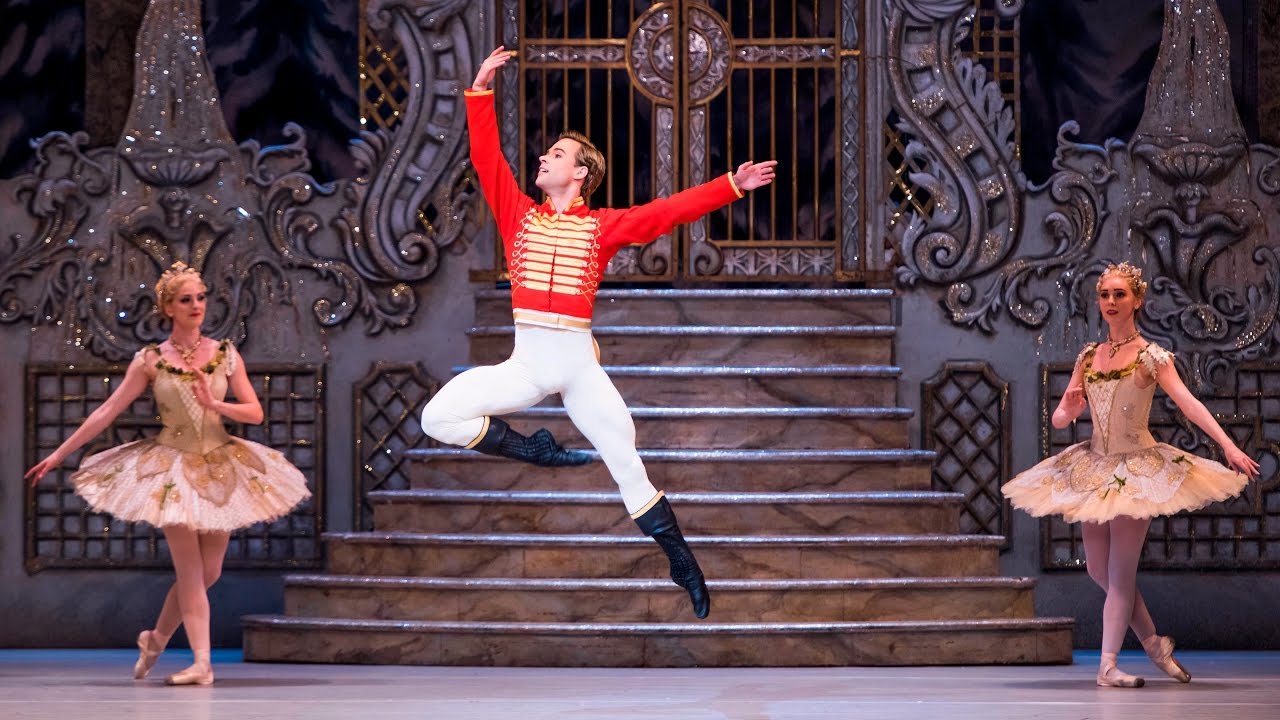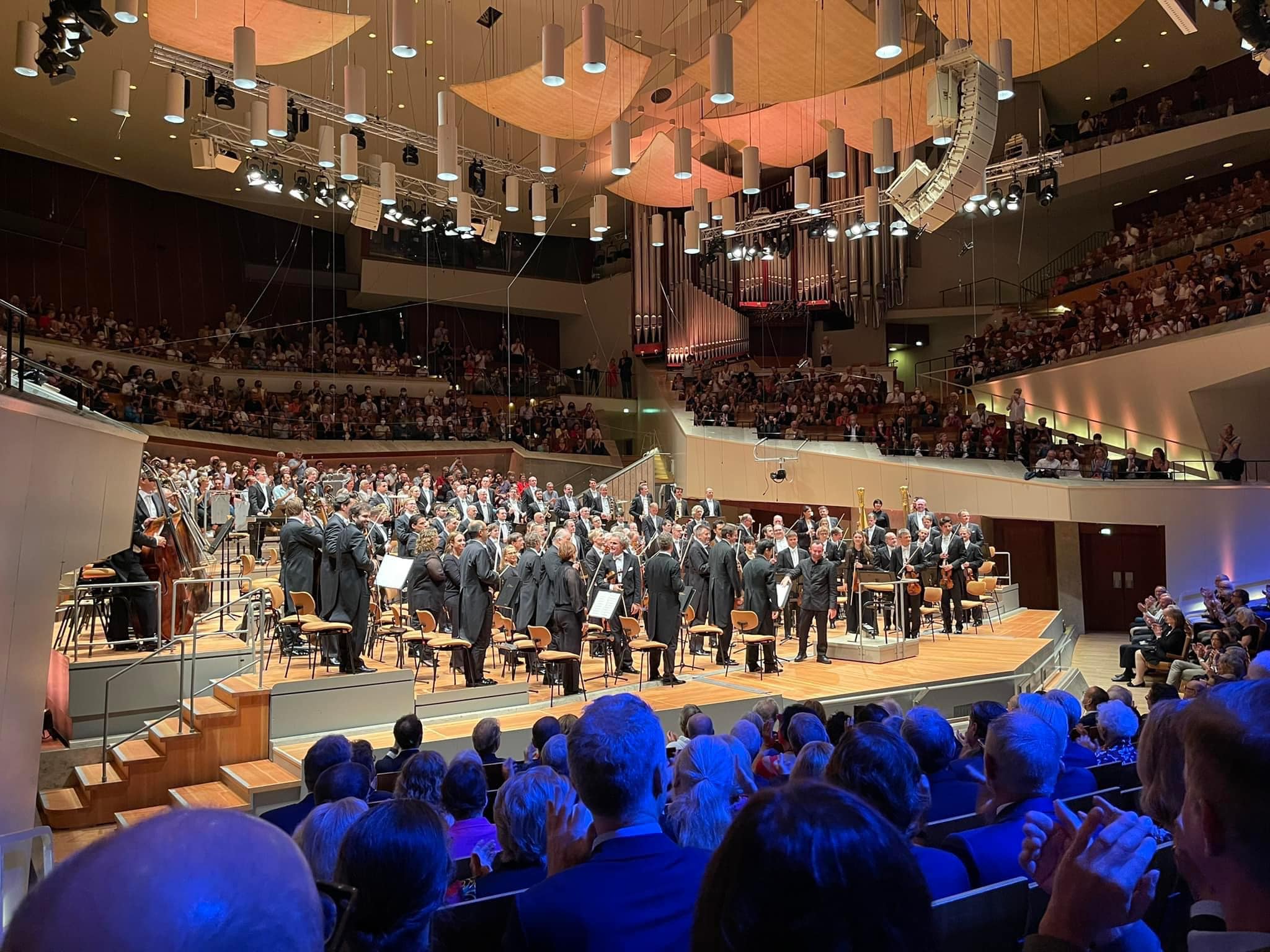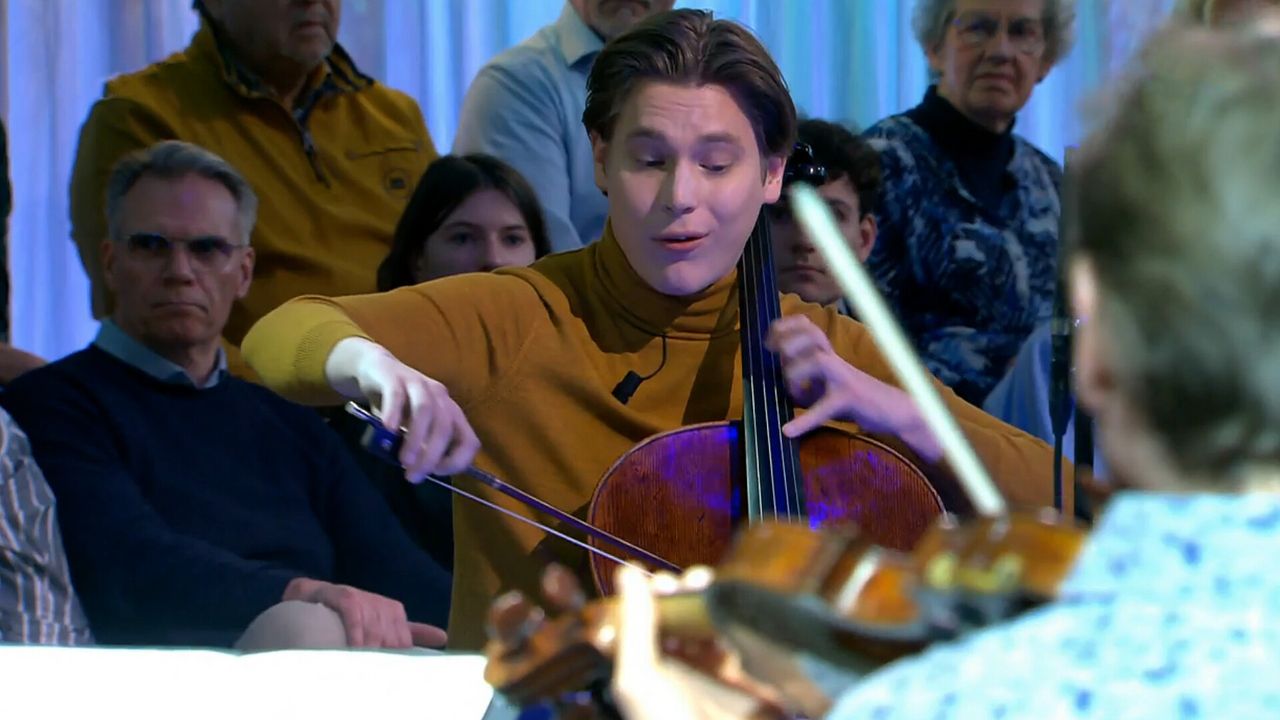California conductor finds a fluting error in Nutcracker score
mainJohn Stubbs is music director of the California Ballet Company and a long time violinist in the San Diego Symphony. During the Covid layoffs he has been poring over scores.
Guess what he’s found? In Tchaikovsky’s Nutcracker, a printer has changed the composer’s two flutes to flute and piccolo.
‘It added a bright colour where Tchaikovsky didn’t mean to have a bright colour,’ says Stubbs. He’s now working on a new critical score.

Read here.





The Nit-Picker
Excellent!
There’s hardly any work by any composer that doesn’t have errors in either the printed score or parts. MOLA (Major Orchestra Librarian’s Association) keeps a massive file of known errors. Even the beautifully re-engraved score and parts from the venerable Luck’s Music has goofs. Norman Del Mar wrote a whole book about some of the most egregious mistakes but most conductors are lazy and don’t care and frankly, most audience members can’t hear any problems.
Even such famous scores like Stravinsky’s Firebird concert suite is sprinkled with printing errors.
Ironically, the safest way of printing a errorproof score is to reproduce the composer’s handwriting – on the condition that it is clear enough.
In all the different stages of score producing, errors slip into the process. After all, it’s human.
“Ironically, the safest way of printing a errorproof score is to reproduce the composer’s handwriting – on the condition that it is clear enough.”
I’ve edited manuscripts that were perfectly readable – and still contained lots of errors. Real errors and obvious like a dead key on a piano.
But handwritten copies (if the original is lost) are the worst. Still better than nothing, though.
Yes, that is probably right. I was thinking too much about my own practice.
Faultless manuscripts are difficult.
But you always have Sally for proof checking your manuscripts, right?
I get quite worked-up with all of that proofreading, it’s extremely difficult to find any errors, and quite irritating since I’m promised to be paid generously for every mistake I find. It’s the carrot and stick thing and I need the money! On top of this, almost all of my proposals for improving the music with some more dissonances are rejected.
Sally
And some even lazier conductors have also ostentatiously stopped a rehearsal to correct an error they “heard” (based not on their golden ears but on del Mar’s book or similar books of known errors) only to be informed by the accused musician that their parts have had that error corrected for years so the conductor “heard” no such thing and had just made a jackass of himself. Orchestra musicians live for moments of triumph like that.
I did once experience in a rehearsal of the Mozart Clarinet Concerto where the conductor noted that our parts did not agree with his score in one or two places — the problem was he didn’t know which to trust, and since that was our only rehearsal before the performance, as I recall it was resolved by not changing the parts and he made note of it in his score for future reference. I no longer recall where in the Concerto it was, or whether the discrepancy was a note, or a note value. He was struggling to conduct from a miniature study score. I was in the second violins for that one and I’m pretty sure it wasn’t in our part.
Oscar Levant related a story like the one about the musician correcting the conductor in the first chapter of his ‘Memoirs of an Amnesiac’. A great take-down of conductors (many by name), the chapter carries the title “Music in Aspic”.
Except that Levant was as a pianist to classical music what Andre Rieu is to high culture. “Keep playing your music box” (‘The Bandwagon’).
These things are tricky indeed. And what about the ‘ghost tones’ which are neither in the score nor in any orchestral part? They spontaneously appear through the mixing of harmonic series helped by the acoustics of the moment, and can be quite disruptive. (I don’t make this up – Norman del Mar mentions it in his “Anatomy of the Orchestra”.)
Totally agreed, J Barcelo, and you hit the nail squarely on the head with your comment “….most conductors are lazy and don’t care and frankly, most audience members can’t hear any problems.”
Sounds like the germ for a much needed doctoral thesis for a musicologist, conductor or flute player.
This is absolutely colossal news! It’s this very kind of critical work that will prove the lasting relevancy of our art; build new and enthusiastic audiences; and ultimately solve the pervasive funding issues facing performing arts organizations world-wide. I simply could not think of any better use of one’s time during this crisis. What. A. Win!
Praise the Lord for eradicating this pestilence! Nutcracker will never again be defiled by such an egregious printing error. The masses will once again flock to the hallowed halls of classical music to bask in the unparalleled greatness of two unison flutes.
We must genuflect before the gods of Werktreue and pledge out humble subservience. As the ideal transparent performer, we must all avail ourselves of any personal opinions so that we may be a pure conduit for the true genius of the demigods of composition. We are but mere mortal performers and our opinions and tastes must be repressed ere they tarnish the holy scores of history’s giants.
Praise be to the Urtext. Print no evil, play no evil.
Jolly good comment you wrote! Or should I simply say “Prima!” or “Ausgezeichnet!!
I noticed this in my Dover score of the suite when I was still in high school. I crossed out “Picc.” with a pencil and wrote in “Fl. II” instead; should I ever conduct it I will make sure the parts conform. End of story.
Who was the contemporary composer who instructed the publisher not to change any of the notes in his MS. I believe the instruction was something like ‘The wrong notes are right.”
Charles Ives
And Hector Berlioz too..
And it was Schoenberg who said of his music, when criticised for the dissonances: ‘It’s not modern, it’s merely bady played’.
No…it is just bad music no matter how well it is played..(in my own opinion, thumbs down galore a’coming…)
But before the clicks from the Thumbs Down Army, I must say…I do enjoy his G Major Suite for String Orchestra. Energetic and pleasant music.
It’s his 12-tone music which sounds as if written with only the wrong notes. The early music is great and the occasional later tonal pieces are good as well.
Yes, I know a bit about his early music and thanks for the FYI about his occasional later tonal pieces!
I don’t (or ever) think that extreme dissonance is bad. There is a reason why that “The Rite of Spring” (through time) has became an orchestral hit. Also, it was major a reason why I decided to become a timpanist.
One passage, or the whole thing?
I’ve played it a MILLION TIMES, many places are Picc Solos,
and the Intrada, where the Picc soars over the entire Orchestra couldn’t be done on Flute, an octave too low!
It’s become a Traditional Double.
Good Luck trying to take it away!
Actually, it’s 2 Flutes, AND Piccolo.
There are 3 in the Flute, Clarinet and Oboe Sections.
The Suite may be different than the Full Ballet.
It’s not different except for the concert-ending for “Sugar Plum Fairy”.
There’s a pared-down version we do (double woodwinds), since our pit is too small for the real one. Dance of the Mirlitons is 2 flutes and 1 clarinet — less than ideal.
Hold on! Stop the presses! Not so fast!
It is entirely plausible that the piccolo doubling is exactly what Tchaikovsky intended, regardless of what appeared in the manuscript. And without knowing what correspondence occurred between the publisher and the composer, this should be, at the most, a footnote in the score.
The accompaniment of the reprise is different, with thicker lower texture added by the clarinets and bass clarinet.
Moreover, the glockenspiel — absent at the beginning — now accentuates the piccolo. It makes perfect sense that Tchaikovsky, a genius at subtle orchestration, wanted the piccolo timbre at this moment.
I, too, have conducted this work dozens of times, and while I applaud John Stubbs for his sleuthing, I think that the piccolo should stay.
I totally agree. The MS of this is actually a copyist’s version (the original MS was extracted for the Suite and is displayed in a Russian museum) and the stave numbering implies that it should be given to the piccolo (info for the engraver I think). The confusion may be that Tchaikovsky wrote the piccolo below flutes 1 & 2 (as flute 3 doubles piccolo) whilst the copyist places it above flutes 1 & 2. Also, compositionally the piece is additive and it would be unlikely that having added sparkle at the 2nd iteration of the melody he’d remove it for the climax – the glock adds extra sparkle, not alternative glitz! There is a Youtube video where you can see the ms running with a recording.
I too, tried to make sense of Tchaikovsky’s intent before finally stumbling across the first printing of the Suite, where the answer was hiding in plain site. Compare the Suite’s printing to the printing of the complete ballet. The suite had a noticeably better engraver. A friend and colleague wrote a wonderful exegesis on keeping the reprise of the A section on two flutes.
Flute and Piccolo Assignments in Tchaikovsky’s “The Tea” Dance in The Nutcracker
by Randy Brinton
My colleague, John Stubbs, Music Director of California Ballet, has discovered, and asserts that a copyist or publisher error was made at some point in the scores for “The Tea” Dance of The Nutcracker.
This article is in three parts. After a brief overview of the movement’s basic features, the second part is a paraphrasing of several conversations with him after he had consulted the sources.
The last section is from my point-of-view of being convinced of Mr. Stubbs’ assertions, and the amplifying of them through an analysis of the orchestration.
Overview of the movement
The dance begins with an introduction – a two-measure “vamp” that establishes the B-flat tonality and the accompaniment texture used for the whole movement. The solo flute, in high register, begins the four-measure A section. It is made up of the flute’s two-measure tune, and an answering phrase in pizzicato strings. This section is repeated, literally.
At the four-measure B section, the piccolo is introduced as a strikingly shrill, octave doubling with the solo flute. This section is similarly structured with a two-measure answering phrase in the strings. As in the A section, these four measures are also repeated.
The A-section is then reprised, but now with significant instrumentation differences. A coda closes the movement.
Discovering the error
As Mr. Stubbs explains, his curiosity was aroused upon noticing an unexpected piccolo entrance while conducting the ballet in rehearsal. The sound of the piccolo at the return of the A section caught his attention. It lead him to find an early-source holograph, and compare it with other commonly-available scores.
In comparing scores, he noticed that the layout of the piccolo, first, and second flute parts differed. All scores have three individual staves for the three instruments. But the holograph has the piccolo assigned to the top staff, whereas in his score – and all of the several others he reviewed – the piccolo staff is below the two flute staves.
In all scores, the return of the A section is after a page turn. It is here that Mr. Stubbs believes that the copyist incorrectly transferred the part assignments as they prepared this new page. The holograph is unambiguous in the part assignments, but the copyist confused the stave assignments, resulting in mis-assigning the piccolo to play, again, doubling at the high octave, instead of the second flute, doubling at the unison.
Because the error appears in all other available sources, he suggests that it was made early on; That the copyist was working from this holograph’s original, or another closely-related score.
Analysis in support of Mr. Stubbs theory
The following are my ideas of why the orchestration, as seen in the holograph, is more nuanced and effective than the later commonly performed version.
The piccolo’s entrance on the answering phrase (m. 10) is so startling, as it dives down from its super-high g-natural. It’s just one of so many Nutcracker charms, beloved year-after-year!
However, at the return of the opening tune (2 m. after A), having the picc double at the higher octave detracts from the developing orchestration of this movement.
With the repeating of the opening melody, the main feature of this section (starting 2 m. after A) is that the music steps up a level in volume and rhythmic activity. Clarinets, horns, and Celeste enter to accomplish this.
Certainly hearing picc at this point would increase the overall intensity, and would seem to correlate with the bump up. But it becomes a dilution of the effect of Tchaik’s orchestration.
The clarinets are the ones presenting new, interesting material; Their circus-band arpeggios suddenly quicken the pulse and thicken the texture. The horn & Celeste join ongoing parts, and so, strengthen already-heard elements.
To reinforce the melody against the added forces, Tchaik adds the second flute. The beefier unison of two flutes, marked forte, allows the tune to remain prominent.
One advantage of not having picc play at this point keeps the repeat of the tune in its original octave; Except for the increased volume, the melody’s return is unchanged and unremarkable. So the ear is lead, with less distraction, to the clarinets, and to be delighted by their jolly part.
Tchaikovsky features the piccolo only in the B-section melody. In this way, it’s role is made more special; With it’s distinctive color and register, it pretty much “owns” this melody.
The picc, if allowed to double at the octave is very scene-stealing, with the immediate B-flat rip up to it’s high register sounding like the most important thing. It would draw attention away from the added character of the clarinet parts.
Saving the picc color until the coda is a payoff. We are ready to hear it again. Its use at the end is non-melodic, but certainly colorful and rhythmic, making the ending extra jangly. It brightens the flutes (the first time hearing the full flute section); the whole section hammers away on F-natural to the very end.
In this dance, Tchaik’s use of picc is quite effective and satisfying, while being surprisingly restrained.
John,
Thanks for the additional information. I still think that this is going to be a matter of “informed choice” on the part of the conductor, and at least now we all know that there is, indeed, a choice.
Randy Brinton’s summary makes one error, and to me it is critical. There is no celesta in this movement; the instrument specified is glockenspiel, which (as you know) is a two-octave transposing instrument, as opposed to the one-octave transposing celesta. It also has a notoriously brilliant and piercing sound. Kind of like a piccolo, which makes me think that Tchaikovsky intend the glock to highlight the piccolo at this point.
In no way do I intend to disparage your diligent scholarship on this matter. But I find myself asking if anybody in the last 138 years ever listened to this passage as traditionally played and thought, “Hmm, that doesn’t sound like the piccolo should double the flute there”? I promise I’ll think about this more, but I’m not convinced.
Yes Jim Dukey, you need three players to perform the Nutcracker, and just like Sleeping Beauty and Swan Lake, one of them needs to play the piccolo. Just like EVERY one of Tchiakovsky’s 6 Symphonies, just like his Romeo and Juliet, AND his 1812 Overtures. The Nutcracker not only has an incredible and sometimes totally independant Piccolo part, but even the 2nd Flute has some very tricky piccolo solos when the rats come on stage…So as a veteran performer of the Nutcracker, I would really love to see some more info on this revelation and if it is worthy of the creation of a new critical score? I’m curious!
A music librarian for one of North America’s most venerable orchestras once pointed out to me his theory that, due to a peculiarity in the layout of the manuscript score, the timpani is missing a bar in the overture to Die Meistersinger. In his opinion (and it makes a lot of sense to me also), the timpani should enter at the standing “G” with the double basses at measure 8, rather than at measure 9 where it is always played.
This is fun… what are some other famous misprints?
No, the later entry of the timpany is correct, because musically, the first beat at bar 9 is a different place than the first beat of bar 8. Also the harmony in b 9 is different: it’s the tonic, while at b 8 it is the dominant. The timpany stresses the dominant function in the bass line while the harmony passes through the tonic, the timpany stresses the dominant function of the whole passage. Wagner knew what he was doing. Also delaying emphasis helps to focus the tonal direction.
To me the variation of instrumentation between repetitions makes sense, since the orchestration underneath changes every time. (Sorry for all those “-tion” words in once sentence – they do pile up and get clunky.)
“Flute alone, then flute(s) with piccolo, then 2 flutes without piccolo” makes more sense to me musically than “the same all 3 times.” Then again, the changing orchestrations I mentioned might provide as much change as the composer wanted, or the conductor wants. If we actually perform it next season (fingers crossed), I may ask the conductor about it.